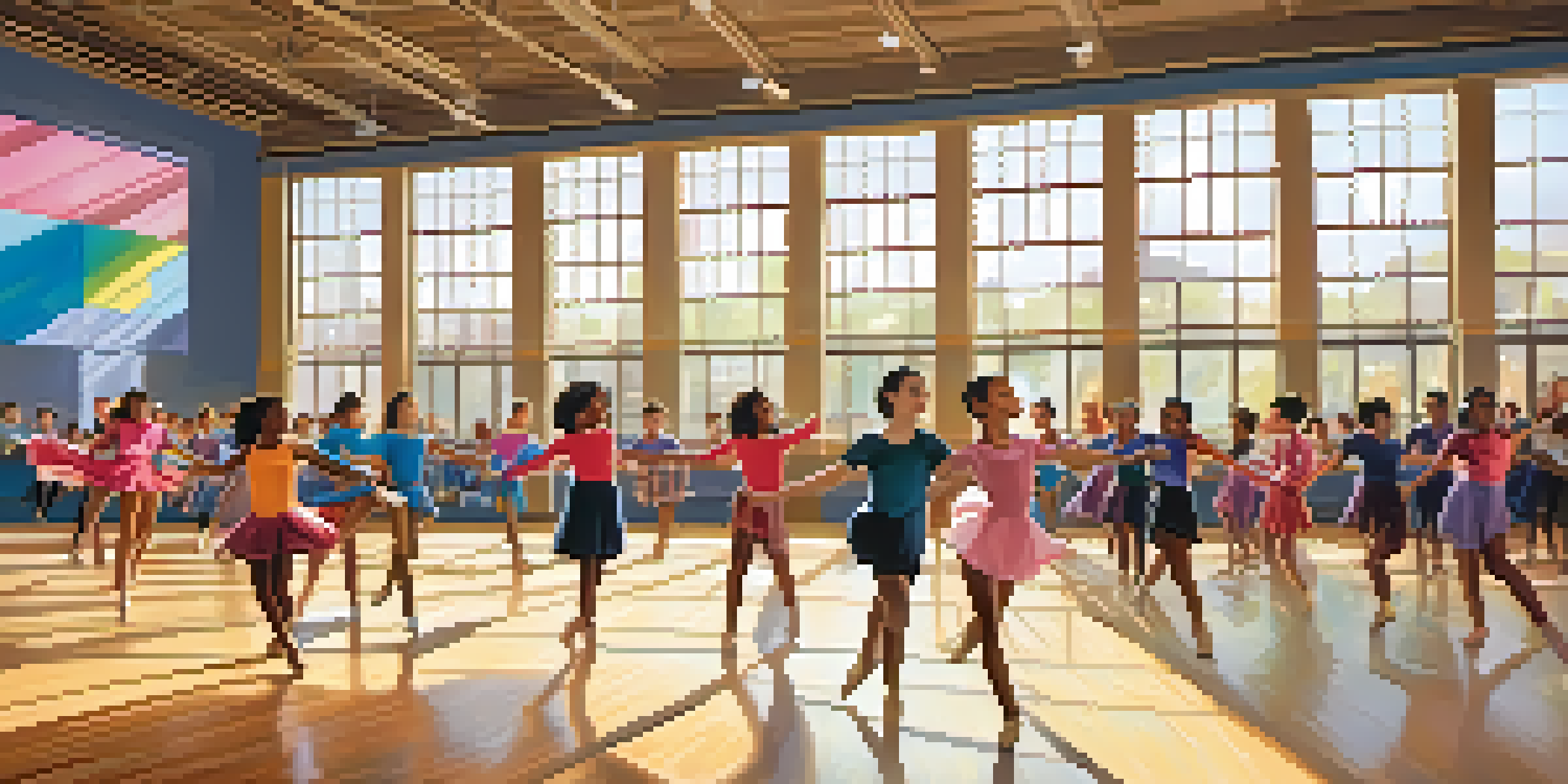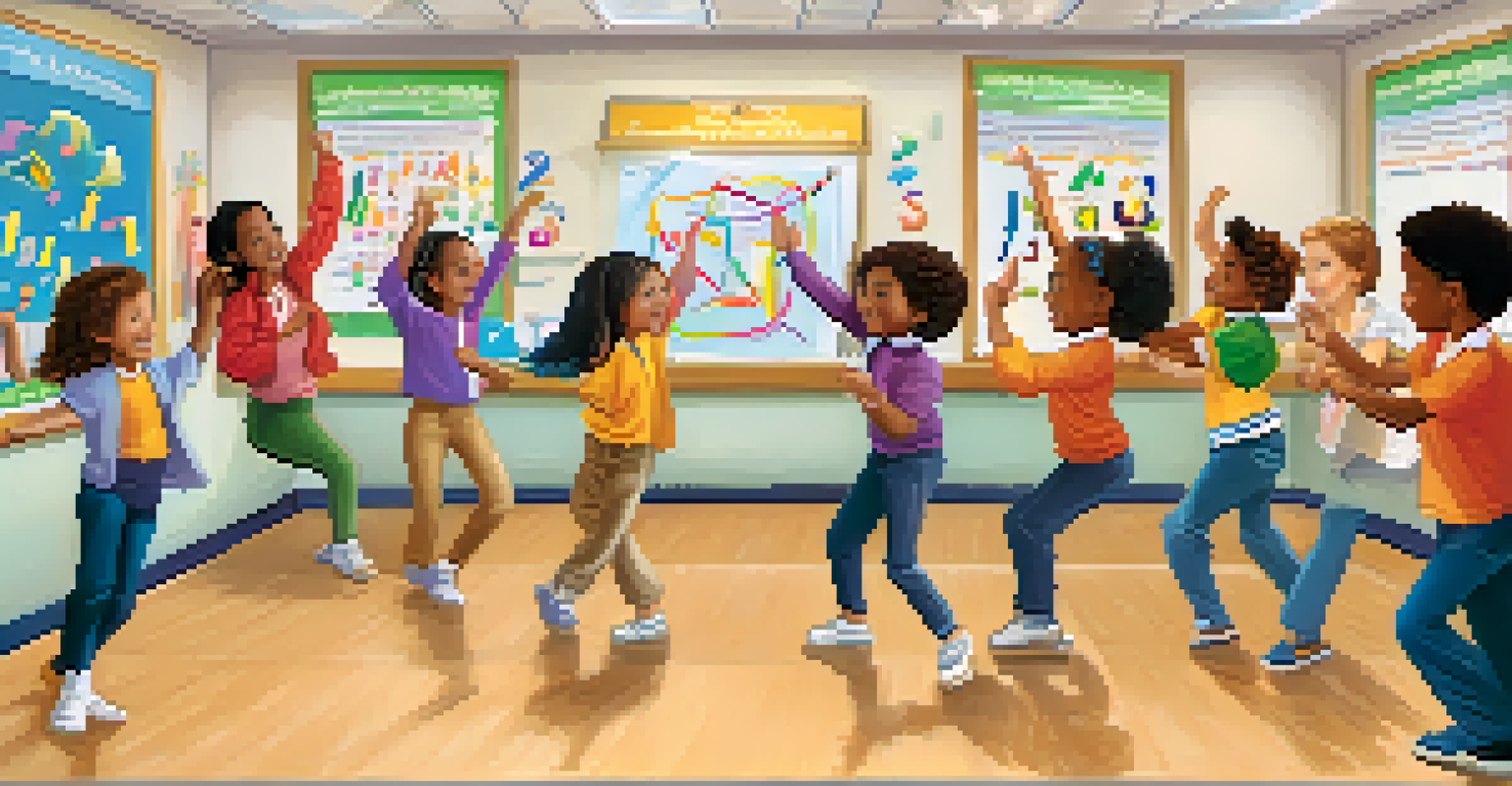Building Community Through Dance: School Programs That Work

The Importance of Community in Schools
Building a sense of community in schools is essential for student well-being. When students feel connected to their peers and teachers, they are more likely to engage and thrive. A strong community can help reduce feelings of isolation and promote a supportive environment.
Dance is the hidden language of the soul.
Dance programs create an inclusive space where students of all backgrounds come together. Participation in dance fosters teamwork, communication, and mutual respect, essential ingredients for a healthy school community. These programs can bridge gaps between different social groups, creating lasting friendships.
Moreover, a vibrant school community can lead to improved academic performance. Students who feel they belong are often more motivated to participate in class and school activities. Dance, as a collective art form, plays a pivotal role in enhancing this sense of belonging.
Dance Programs: A Tool for Engagement
School dance programs engage students in a fun and creative outlet. They provide an opportunity to express emotions and tell stories through movement, which can be especially beneficial for those who might struggle with traditional learning methods. The joy of dance often draws in students who might feel disengaged otherwise.

Moreover, these programs cater to a wide range of skill levels, making them accessible to everyone. Whether a student is a seasoned dancer or a complete novice, there’s a place for them in the dance community. This inclusivity not only boosts confidence but also encourages participation from diverse groups.
Community Boosts Student Well-Being
A strong sense of community in schools enhances student engagement, reduces isolation, and promotes a supportive environment.
Engagement through dance can also translate into better attendance and participation in other school activities. When students are excited about one program, they often become more involved in the school as a whole, creating a ripple effect of enthusiasm and community spirit.
Building Empathy and Understanding Through Dance
Dance is a universal language that transcends cultural barriers. By participating in dance programs, students learn to appreciate different styles and traditions, fostering a sense of empathy and understanding. This exposure can help break down stereotypes and nurture a more inclusive environment.
Education is not the filling of a pail, but the lighting of a fire.
When students collaborate on dance routines, they practice active listening and respect for each other's ideas. This collaborative process encourages them to see things from different perspectives, enhancing their social skills. Such experiences are invaluable in helping young people navigate diverse social situations.
Furthermore, the emotional expression involved in dance creates a safe space for students to share their feelings. This openness can lead to deeper connections among peers, as they support one another through the highs and lows of their routines and performances.
Integrating Dance with Academic Learning
Many schools are discovering the benefits of integrating dance with academic subjects. For example, incorporating rhythm and movement into math lessons can help students grasp complex concepts more easily. This kinesthetic approach makes learning more dynamic and engaging.
Dance can also be used to teach history and culture, allowing students to explore different time periods and societies through movement. By studying traditional dances from around the world, students gain a richer understanding of global cultures and their histories, broadening their horizons.
Dance Fosters Engagement and Inclusion
Dance programs provide an accessible platform for students to express themselves, build confidence, and connect with diverse peers.
This integration not only enhances academic learning but also reinforces the idea that education can be fun and multifaceted. When students see how dance relates to their studies, they are more likely to appreciate the relevance of their education.
The Role of Teachers in Dance Programs
Teachers play a crucial role in the success of school dance programs. They act as mentors and guides, helping students navigate their dance journeys while fostering a sense of community. A passionate educator can inspire students to embrace dance and its accompanying values of teamwork and perseverance.
Furthermore, teachers can create a supportive atmosphere where students feel comfortable taking risks. By encouraging creativity and self-expression, educators can help students find their unique voices within the dance community. This empowerment can have lasting effects on their confidence and self-esteem.
Collaboration among teachers is also essential for the sustainability of dance programs. When educators from various subjects come together to support dance initiatives, they can create a more cohesive and enriching experience for students.
Community Involvement and Support
Engaging the broader community is vital for the longevity of school dance programs. Local dance studios, artists, and organizations can provide resources, workshops, and mentorship opportunities. This collaboration strengthens the connection between schools and the community, enriching students' experiences.
Community events, such as dance showcases or festivals, can also bolster support for school programs. These events not only celebrate students' talents but also raise awareness about the importance of arts education. When families and local businesses come together to support these initiatives, it fosters a sense of pride and unity.
Collaboration Enhances Dance Programs
Teachers and community involvement play crucial roles in sustaining dance initiatives, enriching student experiences and fostering unity.
Moreover, community involvement can lead to increased funding and resources for dance programs. When the community sees the value in these initiatives, they are more likely to contribute, ensuring that dance remains an accessible and vibrant part of school life.
Evaluating the Impact of Dance Programs
To ensure dance programs are effective, schools must regularly evaluate their impact. This can be done through student feedback, performance assessments, and tracking participation rates. Understanding how students respond to dance initiatives helps in refining and improving these programs.
Moreover, qualitative measures, such as student testimonials, provide insights into the personal growth and community building that dance fosters. Hearing firsthand accounts of how dance has positively impacted students' lives can be powerful evidence for program support.

Ultimately, continuous evaluation not only highlights the successes of dance programs but also helps identify areas for improvement. By remaining adaptable and responsive, schools can ensure that their dance initiatives continue to thrive and serve their communities.